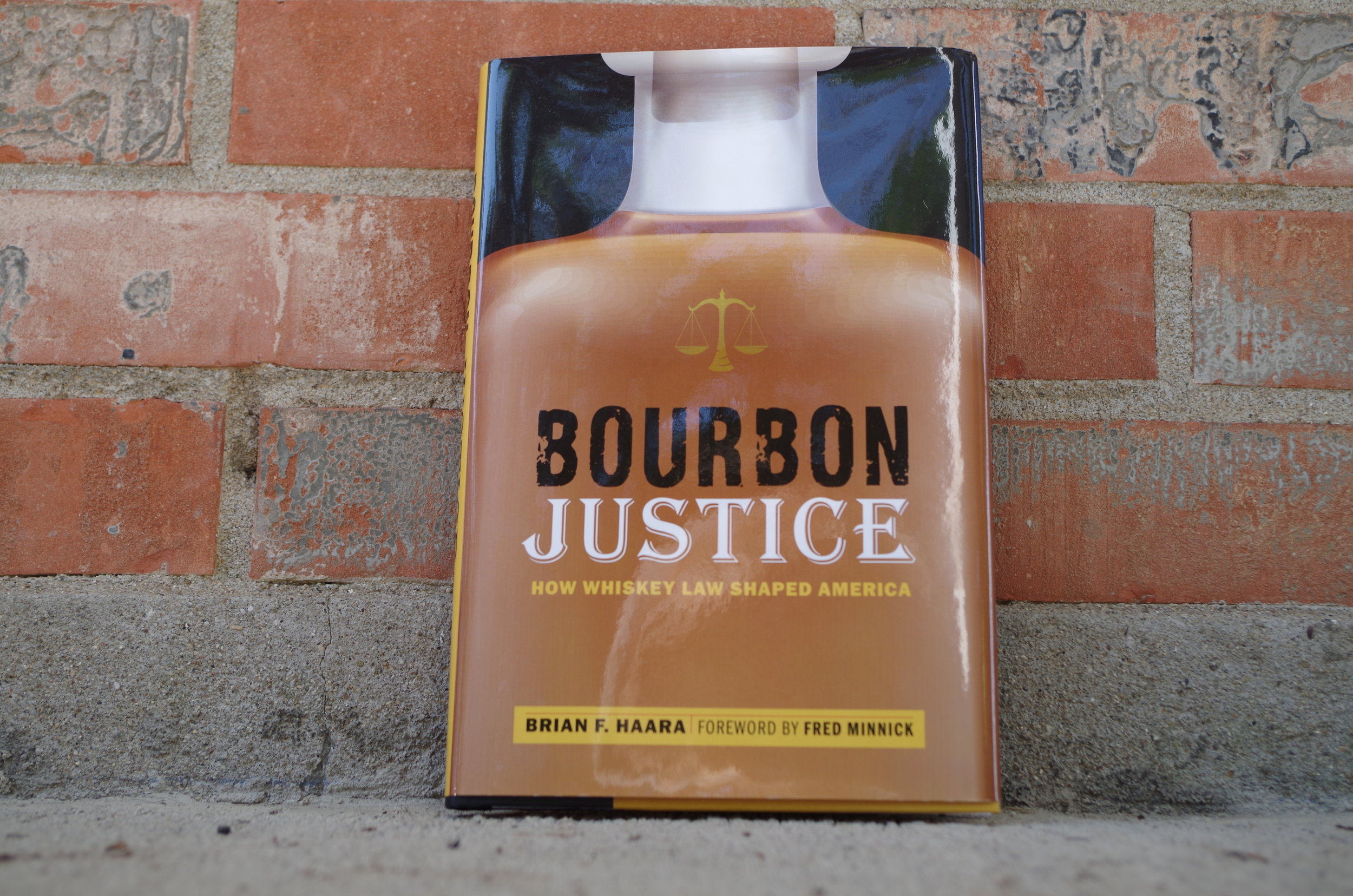Book Review: Bourbon Justice by Brian F. Haara
photo by Maggie Kimberl
There are some people who have no idea how integral bourbon is to American history. It’s understandable, because bourbon is just a simple agricultural product that has been made since before it was called “bourbon”, and few people stopped to take note or record that history. After all, most would think it was silly to record the history of what they did with the corn they grew. There are few resources available to whiskey historians once you go back a few decades, but the single most important record of bourbon history that is largely intact from the founding of the nation is the legal record.
The bourbon industry was responsible for many of the laws, business practices, and social norms we take for granted today. Even the term “brand name” came from the bourbon industry’s practice of branding distillery information on the end of a barrel. To understand the history of whiskey in America is to understand the history of America itself, and Brian Haara’s new book Bourbon Justice, with a foreword by bourbon historian Fred Minnick, does an excellent job of fleshing out the intersections between the two.
Generations ago, before there were many laws on the books, putting tobacco spit, acid, prune juice, and rattlesnake heads into spirit alcohol and calling it “whiskey” was perfectly legal - and people did it all the time. The legitimate distillers pushed for a legal framework for what could be called “whiskey” and “bourbon”, and some of the first consumer protection laws were born. Consumer protection laws were designed to protect and promote the whiskey industry, not to hinder it. Wise business owners realized that selling a lesser quality product was no way to ensure long term business success. It was these early actions that shaped the whiskey industry into what it is today.
Haara’s book is divided into ten chapters, each of which deals with a different point of intersection between bourbon and the law. What I find particularly interesting about his work is that many details about the early bourbon pioneers which could have been lost to history were preserved in the legal record. For instance, much of what we know about figures like Colonel E.H. Taylor and his business practices is thanks to his penchant for lawsuits, which come up frequently in this book. It helps to paint a clearer overall picture of how the Kentucky Bourbon industry was able to remain so strong and so successful in the face of repeated challenges over many decades.
From a consumer perspective this book is also a must-read. Even today there are brands trying to get away with deceiving the public, and often thanks to lack of funding to those government offices that are supposed to crack down on deceptive practices, it’s often easy to slip some through. Lawsuits are still common in the spirit alcohol industry for this reason, and this book helps lay out the rules clearly and concisely in a manner that is useful for consumers to determine whether a brand’s labeling is up to snuff.
Throughout the book there are tasting notes, from Jim Beam to Yellowstone, Bulleit to Willett, and everything in between - even Jack Daniel’s. This is a nice way to highlight that this is living history is living, not mothballed. It is also a great resource for ways to break up your reading by enjoying a dram.
When a commercial brand’s practices come into question, often the case law used to fight their efforts comes from bourbon, as Haara points out repeatedly throughout this book. As we hear cries for de-regulation in different industries we can look at the history of bourbon for why there were regulations in the first place. If you want to discover a deeper level of understanding of American history, bourbon history, and how the two shape the world you know today, pick up a copy of Bourbon Justice.

